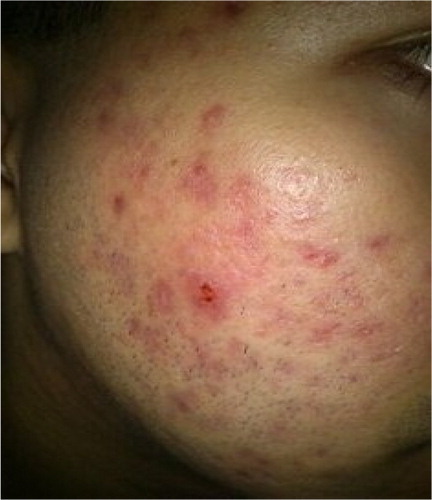Abstract
Acne vulgaris is adebilitating dermatologic disease, and is conventionally treated by laser therapy using a microring resonator system. An evolving understanding of laser-tissue interactions involving Propioni bacterium acneproducing porphyrins, and the development of lasers to target the sebaceous glands, has led to the development of an escalating number of laser light for acne treatment. The results show that the full width at half maximum of the proposed laser pulse of 0.15 nm can be generated using a microring resonator system. The power of the laser is 200 W and the wavelength laser is 1,032 nm, which is proposed as a treatment of acne vulgaris diseases.
Introduction
Acne vulgaris is one of the most prevalent and potentially physically and emotionally debilitating dermatologic diseases which is caused by the overgrowth of sebum, abnormal desquamation of the sebaceous follicle epithelium, and P. acnes proliferation (Bojar and Holland Citation2004, Inuma et al. 2009, Farrar and Ingam Citation2004). It affects approximately 40 million adolescents, 25 million adults, and accounts for more than 30% of all visits to the dermatologist (Leyden Citation2003, Mulder et al. Citation2001). The pathogenesis of acne has been found on bodies where hair follicle and sebaceous glands are present such as face, upper neck, and chest (Leyden Citation1995, Habif and Habie Citation1996). The acne vulgaris has four main interacting factors, i.e. increased sebum production, microbial flora changes, abnormal keratinization, and inflammation (Strasburger Citation1997, Cunliffe and Simpson Citation1998, CitationBraun-Falco et al. 2001, Korkut and Piskin Citation2005). Many treatments have been proposed to control acne vulgaris, such as benzoyl peroxide, antibiotics, sulfur and sodium sulfacetamide, azelaic acid, and retinoids (Keri and Shiman Citation2009). Clindamycin and erythromycin are the most frequently used agents against P. acnes (Nishijima et al. Citation1996, Ishida et al. Citation2008). Acne is conventionally treated with a variety of topical and oral therapies that introduce a considerable number of short-term and potentially significant long-term consequences (Lee et al. Citation2003, Pawin et al. Citation2004, Longshore and Hollandsworth Citation2003, Gollnick and Krautheim Citation2003, Velicer et al. Citation2004). The light-based and radiofrequency device manufacturers are addressing the need for efficacious and safe acne treatments with minimal downtime. This is possible through an evolving understanding of laser-tissue interaction involving Propioni bacterium acnes (P. acnes)-produced porphyrins and the development of deep-penetrating infrared non-ablative lasers, which affect sebaceous glands. In addition to lasers, a number of other non-invasive acne treatments have emerged recently, including short- and broad-band visible light (Sigurdsson et al. Citation1997, Ashkenazi et al. Citation2003, Elman et al. Citation2003), photodynamic therapy using non-coherent light (Ashkenazi et al. Citation2003, Goldman and Boyce Citation2003), as well as radiofrequency energy (Ruiz-Esparza and Gomez Citation2003, Elman and Lebzelter Citation2004, Hirsch and Shalita Citation2003). In this article, the ring resonator system is, for the first time, proposed to generate ultra short laser pulses for acne treatment. The theory, fabrication, and applications of microring resonators (MRRs) and nanoring resonators (NRRs) have been discussed extensively in the literature (Sumetsky Citation2004, Citation2006a, Citation2006b, Citation2008, Sumetsky et al. Citation2005, Citation2006, Citation2007a, Citation2007b, Xu and Brambilla 2007, White et al. Citation2006, Matsko and Ilchenko Citation2006, Ilchenko and Matsko, Citation2006, Little et al. Citation2005, Xu and Schmidt 2005, Schwelb Citation2004, Gheorma and Osgood Citation2002, Yariv 2002, Xue et al. Citation2005, Jalil et al. Citation2012). The authors have developed a PANDA configuration based on a ring resonator system for medical applications (Aziz et al. Citation2012, Jalil et al. Citation2011a, Citation2011b, Suwanpayak et al. Citation2011a, Citation2011b, Mitatha et al. Citation2011a, Citation2011b).
Methods and materials
Laser treatments
Acne commonly affects the face, especially the T-zone, and trunk. Non-inflammatory lesions include open “black” comedones (papules with central darkened impaction) and closed “white” comedones (flat, pale papules). Inflammatory lesions include papules, pustules, and nodules. Secondary bacterial infection (e.g. Staphylococcal aureus) may rarely increase crusting and inflammation. There are five main types of scars. Ice-pick scars are narrow, tapering deeply into the dermis. Rolling scars are wide and shallow. Boxcar scars are well-demarcated, punched-out depressions. Hypertrophic and keloid scars are raised, the latter extending beyond the area of original inflammation (Nguyen and Su Citation2011).
In non-topical or intralesional anesthetic treatment, according to baseline randomization, the affected areas were treated with a non-overlapping Gaussian pulse of 50 mW using a 7-mm hand piece. Similarly, at these sessions, contralateral sides were treated with a bright soliton pulse with 178 mW using a 7-mm spot size. Two passes of laser treatment were delivered per session and concurrent forced-air cooling was used for epidermal protection. shows the acne scars of a patient.
Perifollicular elastolysis presents as truncal follicular atrophy. Despite inter-observer and intra-observer variability, grading of the severity of acne can be useful for monitoring response to therapy. The Leeds-Cunliffe technique is a facial photo-numeric scale that assigns a number from a manual to the patient's presentation. Serial photography is also helpful to investigate Acne vulgarise (Bhardwaj et al. Citation2005). Psychological assessment is pertinent for those with severe scarring, acne excoriee, and dysmorphophobia (Nguyen and Su Citation2011).
Laser generation
A monochromatic light source is launched into a ring resonator with constant light field amplitude (E0) and the router quantum key distribution as shown in , which is the combination of terms in attenuation (α) and phase (f0) constants, which results in temporal coherence degradation. Hence, the time-dependent input light field (Ein), without pumping term, can be expressed as
where L is a propagation distance (waveguide length).
It is assumed that the nonlinearity of the optical ring resonator is of the Kerr-type; i.e., the refractive index is given by
where n0 and n2 are the linear and nonlinear refractive indexes, respectively. I and P are the optical intensity and optical power, respectively. The effective mode core area of the device is given by Aeff. For the microring and nanoring resonators, the effective mode core areas range from 0.10 to 0.50 μm2 (Mithata et al. Citation2009).
When a Gaussian pulse is input and propagated within a fiber ring resonator, the resonant output is formed, thus the normalized output of the light field is the ratio between the output and input fields (Eout(t) and Ein(t)) in each roundtrip, which can be expressed as
Equation (3) indicates that a ring resonator in this particular case is very similar to a Fabry-Perot cavity, which has an input and output mirror with a field reflectivity, (1-κ), and a fully reflecting mirror. k is the coupling coefficient, and represents a roundtrip loss coefficient, and are the linear and nonlinear phase shifts, and is the wave propagation number in a vacuum, where L and α are a waveguide length and linear absorption coefficient, respectively. In this work, the iterative method is introduced to obtain the results as shown in Equation (4) when the output field is connected and input into the other ring resonators.
Results
Two kinds of input pulses (Gaussian and bright soliton) are used to generate an ultra-short laser pulse. Input power for Gaussian pulse is 2.mW and for the bright soliton is 10mw. Spatial and temporal modes are investigated by simulation with three different center wavelengths (1.3, 1.2, and 1.1 µm) for both types of input pulses. The output of the first ring (R1) is chaotic signal and cancellation chaotic signal is achieved by the second (R2) and the third rings (R3). The parameters of ring radii are 18µm, 10 µm, and 5 µm for R1-R3, respectively, as shown in , and the couple coefficient of the rings are 0.89, 0.62, and 0.99. shows the results of the ring resonator with Gaussian pulse 2.5 W as input signal. The center wavelength is 1.3 µm and the output signal has 4 wavelengths that are 1,010 nm, 1,070 nm, 1,095 nm, and 1,180 nm. shows the corresponding values of ring parameters used to generate ultra-shot pulses for spatial mode and temporal mode for Gaussian input pulse at different center wavelengths. shows the results of the ring resonator with bright soliton pulse 10 mW as input signal for spatial mode and temporal mode with center wave length 1.3 µm. The output of the first ring (R1) is chaotic signal and cancellation chaotic signal is achieved by the second (R2) and the third rings (R3). The parameters of ring radii are given in for center wavelengths 1.1, 1.2, and 1.3 µm. shows the full-width t half maximum at 0.15 nm, which is the smallest laser coherence and non-effect for good cells in acne.
Figure 2. Diagram generation 1,032 nm laser treatments, where MRR: Microring resonator, NRR: Nanoring resonator, Ri: Ring radii, Ki: Coupling constants.
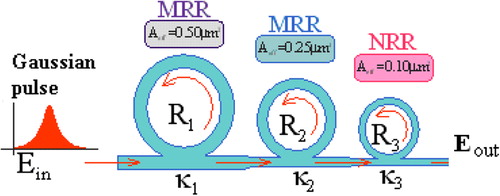
Figure 3. Ultra-short pulse generation at center wavelength of 1.3 µm for (i) spatial mode and (ii) temporal mode, respectively, using Gaussian pulse.
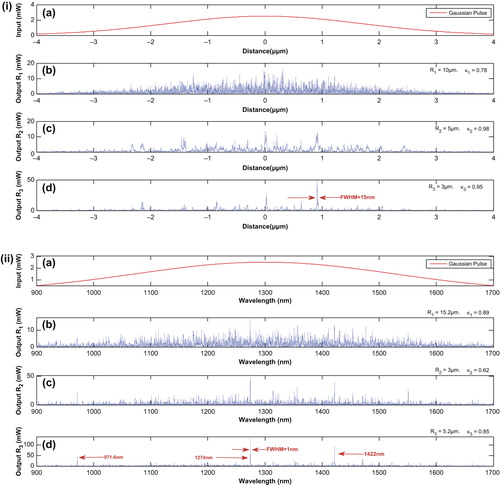
Figure 4. Ultra-short pulse generation for spatial mode at center wavelength 1.3 µm for (i) patial mode and (ii) temporal mode, respectively, using bright soliton pulse.
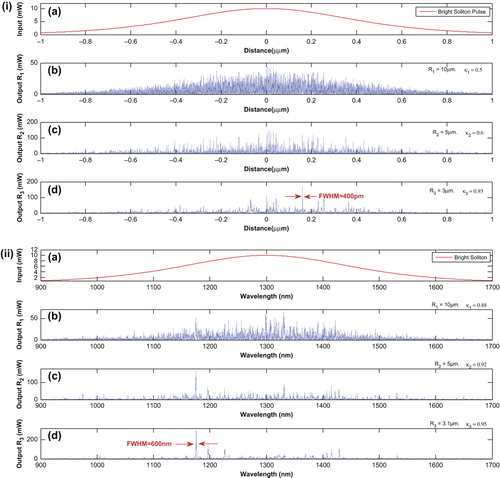
Figure 5. Full width at half maximum: FWHM for temporal mode at center wavelength of 1.3µm using Gaussian pulse.
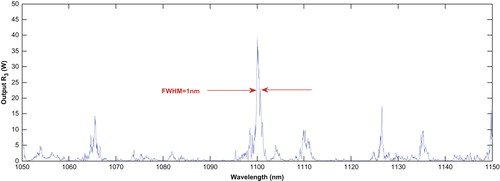
Table 1. Ring parameters used to generate ultra-short pulse for spatial and temporal modes for Gaussian input pulse at different center wavelengths.
Table 2. Ring parameters used to generate ultra-short pulse for spatial and temporal modes for bright soliton input pulse at different center wavelengths.
Conclusion
A new generation of laser therapy by microring resonator can be used for acne vulgarism treatment. It is a simple, small, portable, and comfortable technique. The microring resonator can be fabricated on a chip, which can be built in the pen using the smallest needle. In the near future, this system can be applied for microring lasercosmetic procedures. This investigation focused on the generation of controlled ultra-short laser pulses by a microring resonator system to treat acne vulgarism. This study emphasizes the temporal and spatial profiles and parameters which control ultra-short pulses in acne vulgaris treatment. Details of design and fabrication are given in the cited references.
Acknowledgements
We would like to thank the Institute of Advanced Photonics Science, Nanotechnology Research Alliance, Universiti Teknologi Malaysia (UTM), and King Mongkut's Institute of Technology (KMITL), Thailand, for providing the research facilities. This research work has been supported by UTM's Tier 1/Flagship Research Grant, MyBrain15 Fellowship/MOHE SLAI Fellowship, and the Ministry of Higher Education (MOHE) research grant. N. Suwanpayak would like to acknowledge King Mongkut's Institute of Technology Ladkrabang, Bangkok (KMITL), Thailand, for the partial support in higher education at KMITL, Thailand.
Declaration of interest
The authors report no conflicts of interest. The authors alone are responsible for the content and writing of the paper.
References
- Ashkenazi H , Malik Z , Harth Y, . 2003. Eradication of Propionibacterium acnes by its endogenic porphyrins after illumination with high intensity blue light. FEMS Immunol Med Microbiol. 35:17ndash;24.
- Aziz MS , Suwanpayak N , Jalil MA , Jomtarak R , Saktioto T , Ali J , Yupapin PP. 2012. Gold particle trapping and transportation for therapeutic application. International Journal of Nanomedicine. 7 :11–17.
- Bhardwaj SS , Rohrer TE , Arndt K. 2005. Laser and light therapy for Acne vulgaris. Seminars in Cutaneous Medicine and Surgery. 24(2):107–112.
- Bojar RA , Holland KT. 2004. Acne and Propionibacterium acnes. Clin Dermatol. 22 :357–379.
- Braun興Falco O , Plewig G , Wolff HH, . 2001. Dermatology, 2nd ed.; Berlin: Springer–Verlag.
- Cunliffe WJ , Simpson NB. 1998. Disorders of sebaceous glands. In Champion RH , Burton JL , Burns DA , Brethnach SM , eds.; Rook/Wilkinson/Ebling textbook of dermatology, 6th ed.; Milan: Blackwell Science Ltd., pp 1927–84.
- Elman M , Lebzelter J. 2004. Light therapy in the treatment of acne vulgaris. Dermatol Surg30 :139–146.
- Elman M , Slatkine M , Harth Y. 2003. The effective treatment of acne vulgaris by a high–intensity, narrow band 405–420 nm light source. J Cosmet Laser Ther. 5 :111–117.
- Farrar MD , Ingam E. 2004. Acne: Inflammation. Clin Dermatol. 22 : 380–384.
- Gheorma IL , Osgood RM Jr. 2002. Fundamental limitations of optical resonator based high–speed EO modulators. Photonics Technology Letters, IEEE, 14(6):795–797.
- Goldman MP , Boyce SM. 2003. A single–center study of aminolevulinic acid and 417 nm photodynamic therapy in the treatment of moderate to severe acne vulgaris. J Drugs Dermatol2 :393–396.
- Gollnick HP , Krautheim A. 2003. Topical treatment in acne: Current status and future aspects. Dermatology206 :29–36.
- Habif TP , Habie TP. 1996. Clinical dermatology: A color guide to diagnosis and therapy. Philadelphia: Mosby Co.
- Hirsch RJ , Shalita AR. 2003. Lasers, light, and acne. Cutis. 71:353–354.
- Iinuma K , Sato T , Akimoto N, . 2009. Involvement of Propionibacterium acnes in the augmentation of lipogenesis in hamster sebaceous glands in vivo and in vitro. J Invest Dermatol. 129 :2113–2119.
- Ilchenko VS , Matsko AB. 2006. Optical resonators with whispering-gallery modes–part II: Applications. IEEE Journal of Quantum Electronics. 12(1):15–32.
- Ishida N , Nakaminami H , Noguchi N , Kurokawa I , Nishijima S , Sasatsu M. 2008. Antimicrobial susceptibilities of Propionibacterium acnes isolated from patients with acne vulgaris. Microbiol Immunol. 52 :621–624.
- Jalil MA , Abdolkarim A , Saktioto T , Ong CT , Yupapin PP. 2012. Generation of THz frequency using PANDA ring resonator for THz imaging. International Journal of Nanomedicine. 7 : 773–779.
- Jalil MA , Moongfangklang N , Innate K , Mitatha S , Ali J , Yupapin PP. 2011a. Molecular network topology and reliability for multipurpose diagnosis. International Journal of Nanomedicine. 6 :2385–2392.
- Jalil MA , Suwanpayak N , Kulsirirat K , Suttirak S , Ali J , Yupapin PP. 2011b. Embedded nano–syringe on chip for molecular therapy. International Journal of Nanomedicine. 6 : 2925–2932.
- Keri J , Shiman M. 2009. An update on the management of acne vulgaris. Clinical, Cosmetic and Investigational Dermatology, 2:105–110.
- Korkut C , Piskin S. 2005. Benzoyl peroxide, adapalene, and their combination in the treatment of acne vulgaris. J Dermatol, 32:169–73.
- Lee DJ , Van Dyke GS , Kim J. 2003. Update on pathogenesis and treatment of acne. Curr Opin Pediatr15 :405–410.
- Leyden JJ. 1995. New understandings of the pathogenesis of acne. J Am Acad Dermatol. 32 :S15–25.
- Leyden JJ. 2003. Acne vulgaris is a multifactorial disease. J AmAcad Dermatol. 49 :S199.
- Little BE , Chu ST , Absil PP , Hryniewicz JV , Johnson FG , Seiferth F , Gill D , Van V , King O , Trakalo M. 2005. Very high-order microring resonator filters for WDM applications. Photonics Technology Letters, IEEE. 16(10):2263–2265.
- Longshore SJ , Hollandsworth K. 2003. Acne vulgaris: One treatment does not fit all. Cleve Clin J Med. 70 :672–674.
- Matsko AB , Ilchenko VS. 2006. Optical resonators with whispering–gallery modes–part I: Basics. IEEE Journal of Quantum Electronics. 12(1):3–14.
- Mitatha S , Moongfangklang N , Jalil MA , Suwanpayak N , Saktioto T , Ali J , Yupapin PP. 2011a. Proposal for Alzheimer's diagnosis using molecular buffer and bus network. International Journal of Nanomedicine. 6 :1209–1216.
- Mitatha S , Moongfangklang N , Jalil MA , Suwanpayak N , Ali J and Yupapin PP. 2011b. Multi–access drug delivery network and stability. International Journal of Nanomedicine. 6 :1757–1764.
- Mithata S , Pornsuwancharoen N , and Yupapin PP. 2009. A simultaneous short wave and millimeter wave generation using a soliton pulse within a nano–waveguide. IEEE Photon. Technol. Lett. 21(13): 932–934.
- Mulder MM , Sigurdsson V , van Zuuren EJ, . 2001. Psychosocial impact of acne vulgaris: Evaluation of the relation between a change in clinical acne severity and psychosocial state. Dermatology203 :124–130.
- Nguyen R , Su J. 2011. Treatment of acne vulgaris. Paediatrics and Child Health. 21(3):119–125.
- Nishijima S , Kurokawa I , Kawabata S. 1996. Sensitivity of Propionibacterium acnes isolated from acne patients: Comparative study of antimicrobial agents. J Int Med Res. 24 :473–477.
- Pawin H , Beylot C , Chivot M, . 2004. Physiopathology of acne vulgaris: Recent data, new understanding of the treatments. Eur J Dermatol14 :4–12.
- Ruiz–Esparza J , Gomez JB. 2003. Nonablative radiofrequency for active acne vulgaris: The use of deep dermal heat in the treatment of moderate to severe active acne vulgaris (thermotherapy): A report of 22 patients. Dermatol Surg29 :333–339; discussion 339.
- Schwelb O. 2004. Transmission, group delay, and dispersion in single-ring optical resonators and add/drop filters – A tutorial overview. Journal of Lightwave Technology. 22(5): 1380.
- Sigurdsson V , Knulst AC , van Weelden H. 1997. Phototherapy of acne vulgaris with visible light. Dermatology194 :256–260.
- Strasburger VC. 1997. Acne: What every pediatrician should know about treatment?Pediatr Clin North Am. 44 :1505-23.
- Sumetsky M. 2004. Optical fiber microcoil resonators. Optics Express. 12(10); 2303–2316.
- Sumetsky M. 2006a. How thin can a microfiber be and still guide light?. Optics Letters. 31(7):870–872.
- Sumetsky M. 2006b. How thin can a microfiber be and still guide light?Errata. Optic Letters. 31(24):3577–3578.
- Sumetsky M. 2008. Basic elements for microfiber photonics: Micro/nanofibers and microfiber coil resonators. Journal of Lightwave Technology. 26(1):21–27.
- Sumetsky M , Dulashko Y , Fini JM , and Hale A. 2005. Optical microfiber loop resonator. Appl. Phys. Lett. 86 : 161108.
- Sumetsky M , Dulashko Y , Fini JM , Hale A , DiGiovanni DJ. 2006. The microfiber loop resonator: Theory, experiment, and application. Journal of Lightwave Technology. 24(1):242–250.
- Sumetsky M , Dulashko Y , and Fishteyn M. 2007a. Demonstration of a multi-turn microfiber coil resonator; National Fiber Optic Engineers Conference (NFOEC), Anaheim, CA.
- Sumetsky M , Windeler RS , Dulashko Y , and Fan X. 2007b. Optical liquid ring resonator sensor. Optics Express. 15(22):14376–14381.
- Suwanpayak N , Jalil MA , Aziz MS , Ali J , and Yupapin PP. 2011a. Molecular buffer using a PANDA ring resonator for drug delivery use. International Journal of Nanomedicine. 6 : 575–580.
- Suwanpayak N , Jalil MA , Aziz MS , Ismail FD , Ali J , and Yupapin PP. 2011b. Blood cleaner on–chip design for artificial human kidney manipulation. International Journal of Nanomedicine. 6 : 975–964.
- Velicer CM , Heckbert SR , Lampe JW, . 2004. Antibiotic use in relation to the risk of breast cancer. JAMA291 :827–835.
- White IM , Oveys H , and Fa X. 2006. Liquid–core optical ring-resonator sensors. Optics Letters. 31(9):1319–1321.
- Xu F , Brambilla G. 2007a. Manufacture of 3–D microfiber coil resonators. Photonics Technology Letters, IEEE19(19):481–483.
- Xu F , Brambilla G. 2007b. Embedding optical microfiber coil resonators in teflon. Optics Letters. 32(15):2164–2166.
- Xu Q , Schmidt B , Pradhan S , and Lipson M. 2005. Micrometre–scale silicon electrooptic modulator. Nature. 435 :325–327.
- Xue SC , Tanner RI , Barton GW , Lwin R , Large MCJ , and Poladian L. 2005. Fabrication of microstructured optical fibers–Part I: Problem formulation and numerical modeling of transient draw process. Journal of Lightwave Technology. 23(7):2245.Yariv A. 2002. Critical coupling and its control in optical waveguide–ring resonator systems. Photonics Technology Letters, IEEE. 14(4): 1041–1135.

